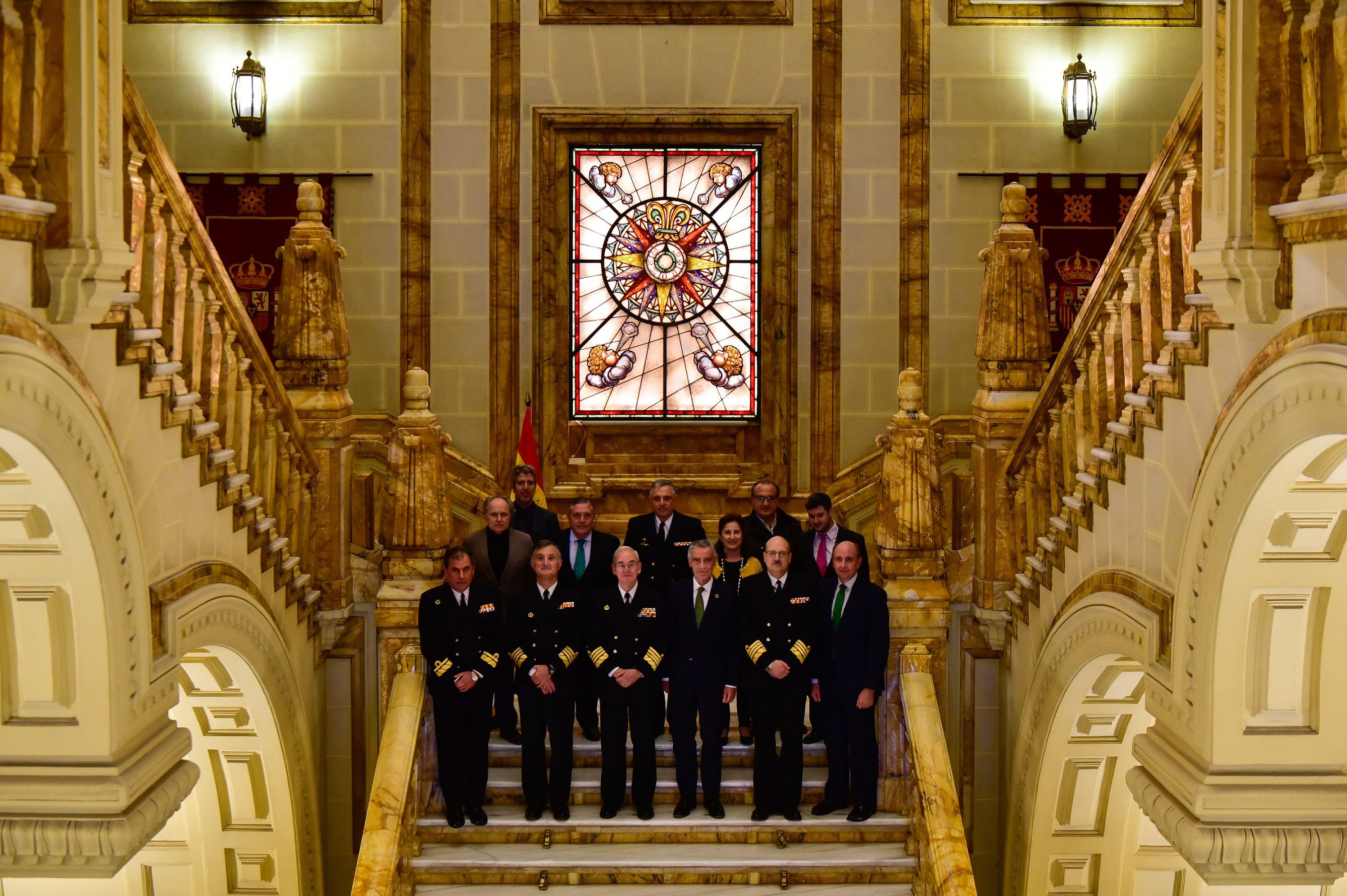Fundación Iberdrola and the Spanish Navy inaugurate the lighting of the monumental staircase in the Navy General Headquarters in Madrid
Fundación Iberdrola and the Spanish Navy inaugurate the lighting of the monumental staircase in the Navy General Headquarters in Madrid
- The project relates to new ornamental lighting that will not only highlight its architectural features but will also improve the maintenance and energy efficiency of this monument.
- The 117 LED luminaires that have been installed add up to a total power of only 2,500 watts, which is equivalent to the power of a domestic radiator and improves energy efficiency by 48%
Madrid. The chairman of Fundación Iberdrola España, Fernando García, and the chief of navy staff, Admiral Teodoro López Calderón, have inaugurated the new ornamental lighting of the monumental staircase in the Spanish Navy’s General Headquarters. This empire-style staircase presides over the entrance from the main door (calle Montalbán) and now has lighting that highlights the architectural features of the space while minimising the visual impact of the luminaires by blending them into their surroundings, thanks to their design.
The project was undertaken in the entrance to this early 20th-century building, which was the headquarters of the Ministry of the Navy until 1977, it is located on the Paseo del Prado and also houses the Naval Museum. It has involved an investment of 50,000 euros and is part of a collaboration agreement between Fundación Iberdrola España and the Naval Museum Foundation.
The new ornamental illumination, which will consist of over 117 LED lights to replace the old bulbs, will emphasise the architectural and eclectic style of the interior of the building, as well as highlighting the three flights and landing of this beige and brown Carrara marble staircase, which is one of the most beautiful examples of Madrid architecture. Above the arch that frames the staircase is a sculptural frieze from the Godoy Palace and it is crowned by leaded windows that illuminate the space overhead.
The purpose of the project – part of the Fundación Iberdrola’s Illumination Programme – underlines Iberdrola’s commitment to maintaining and promoting art and culture as well as driving innovation and respect for the environment.
The new lighting has state-of-the-art LED technology which will reduce energy costs for this monument and CO2 emissions, as well as minimising maintenance. The total power of the new lighting system will be only 2,500 watts, the equivalent of a household radiator. This will make it possible to improve energy efficiency by 48%.
IBERDROLA, committed to society
Since its beginnings, Iberdrola has been committed to the energy, cultural and social development of the communities in which it operates. In this regard, Fundación Iberdrola España represents one more step in this commitment; through the development of initiatives to help improve people’s quality of life.
One of the Foundation’s main areas of activity focuses on the care, conservation and promotion of historic and artistic treasures. Since 2011, the investment assigned to the Lighting Programme has reached almost 3 million euros, and has resulted in improvements to around 40 monuments in Spain, including the Roman Bridge in Alcántara, Cáceres; the façade to the Congress of Deputies in Madrid; the Cathedral in Ávila and the interior of the New Cathedral in Salamanca.
The Naval Museum Foundation, an institution dedicated to raising awareness regarding the maritime history of Spain
The aims of the Naval Museum Foundation include protecting, expanding and disseminating the information on the historical heritage of the Navy contained in its museums in Madrid, Torre del Oro (Seville), Ferrol, San Fernando, Cartagena and Las Palmas de Gran Canaria, as well as in the Naval Historical Archive in Viso del Marqués, Ciudad Real.
One of the Naval Museum Foundation’s most important tasks is to facilitate historical research relating to navigation, war at sea and shipbuilding; in addition to providing support to the Naval Institute of Naval History and Culture.

